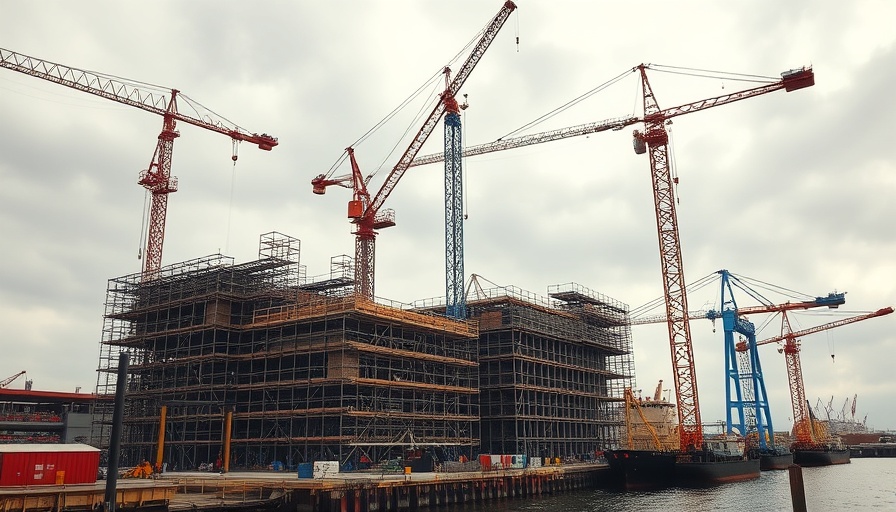
A Tragic Incident: Understanding the Scaffolding Collapse at Port Arthur LNG Site
In the early hours of Tuesday morning, a scaffolding collapse at the Port Arthur LNG construction site in Sabine Pass resulted in a tragic loss of life and injuries among construction workers. The devastating incident, which occurred around 2 a.m., prompted an immediate and comprehensive response, not only from local authorities but also from the construction firms involved. This incident raises significant concerns about safety practices within the construction industry, particularly at high-stakes sites like the Port Arthur LNG.
The Scope of the Project and its Challenges
The Port Arthur LNG site, situated off Highway 87, is an extensive industrial project with hundreds of workers on-site around the clock. Such a large-scale operation inherently comes with complexities that can challenge even the most stringent safety protocols. Construction sites like this one are often faced with the dual pressures of meeting tight deadlines and ensuring employee safety. These challenges are exacerbated by factors such as weather conditions, equipment reliability, and workforce training.
Historical Context: Previous Incidents in Construction
Scaffolding collapses, while thankfully rare, are not unprecedented in the construction industry. For instance, a tragic scaffolding incident in 2012 at a construction site in Philadelphia resulted in six injuries and underscored the importance of safety regulations. As various organizations like OSHA (Occupational Safety and Health Administration) continuously work to enforce and improve safety standards, incidents like these present critical reminders of the ongoing challenges faced in construction.
Understanding the Impacts: Worker Safety and Industry Standards
The consequences of the Port Arthur incident go beyond the immediate loss of life. Families and communities are left to grapple with the tragic outcomes, while the industry must reflect on the adequacy of current safety measures. In a field where the stakes are paramount, it is vital to revisit and reinforce safety practices to prevent future incidents. The emotional and psychological toll on co-workers who witnessed the event cannot be understated, highlighting the need for ongoing mental health resources in the aftermath of such tragedies.
Future Considerations: Industry Response and Regulatory Oversight
In light of this tragedy, industry stakeholders, including regulatory bodies, construction firms, and labor organizations, must engage in robust discussions about safety oversight. Calls for increased training, updated safety gear, and regular inspections have emerged as possible solutions to enhance safety standards across all construction sites. It is essential for the industry to acknowledge that safety shouldn't be compromised, and proactive measures are necessary to safeguard workers.
Community Response and Support for Families
The impact of the scaffolding collapse at the Port Arthur LNG site has rippled through the local community and beyond. Support systems for affected families and fellow workers have gained attention, highlighting the significance of community solidarity during times of crisis. Local organizations and mental health professionals may play a critical role in providing assistance and counseling to those impacted by this tragedy.
Conclusion: A Call to Action for Safety in Construction
As we reflect on the incidents at the Port Arthur LNG construction site, it is crucial to remember the lives lost and affected by this event. This tragedy serves as a stark reminder for the construction industry to prioritize worker safety over all else. Stakeholders must come together to advocate for change, ensuring that safety practices evolve to protect the lives of those who build our infrastructure. Let us stand in support of the families grieving this loss and work together towards creating a safer environment for workers everywhere.
 Add Element
Add Element  Add Row
Add Row 



Write A Comment